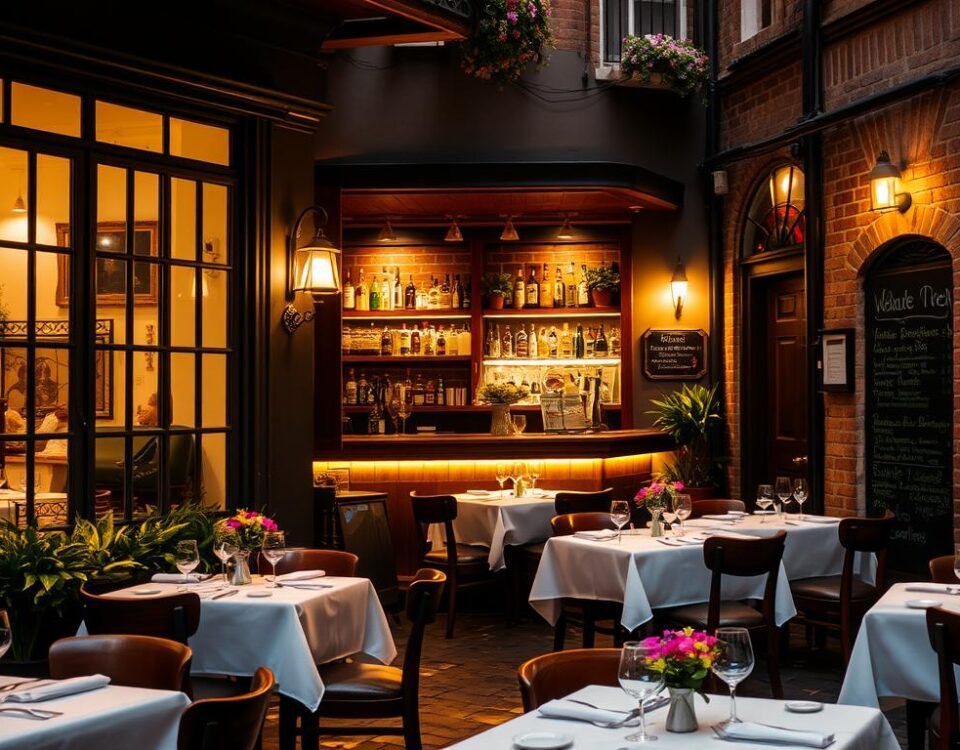
Why Participating in Restaurant Week Is a Game-Changer for Local Restaurants
July 22, 2025
Top 6 Restaurant Promotion Ideas for New Year’s Eve 2026
July 23, 2025As a restaurant owner, you’ve likely experienced the frustration of a slow evening, with tables empty and a sense of uncertainty about how to attract more customers. In today’s competitive dining landscape, having a robust online presence is no longer a luxury, it’s a necessity. Did you know that nearly 80% of diners research restaurants online before making a decision?
This marketing guide is designed to help you navigate the ever-changing world of restaurant promotion, providing actionable strategies to enhance your brand and draw in more patrons. As we head into the 2026 season, staying ahead of the curve is crucial for success.
Key Takeaways
- Develop a tailored marketing strategy to boost your restaurant’s visibility.
- Enhance your online presence through effective digital marketing.
- Identify your unique brand positioning and leverage it for success.
- Discover how to attract and retain more customers.
- Stay ahead of the competition with the latest marketing trends.
The Evolving Landscape of Restaurant Marketing in 2026
As we step into 2026, the restaurant landscape is undergoing a significant transformation, with marketing playing a pivotal role. The industry is witnessing a paradigm shift, driven by technological advancements, changing consumer behaviors, and an increasingly competitive market.
Key Industry Trends Shaping the 2026 Restaurant Scene
The restaurant industry in 2026 is being shaped by several key trends. Firstly, the importance of online presence cannot be overstated, with a significant majority of customers using digital platforms to discover and engage with restaurants. Secondly, the rise of personalized marketing allows restaurants to tailor their offerings to specific customers, enhancing their dining experience. Lastly, sustainability and eco-friendliness have become crucial elements, with consumers increasingly preferring establishments that prioritize environmental responsibility.
These trends underscore the need for a robust marketing strategy that not only highlights a restaurant’s unique offerings but also resonates with the values and preferences of its target audience.
Why Effective Marketing Is More Critical Than Ever
In the competitive landscape of 2026, effective marketing is more critical than ever for restaurant survival and success. It enables establishments to stand out by showcasing their unique brand identity, whether through culinary innovation, exceptional service, or a distinctive atmosphere. Effective marketing helps restaurants connect with potential customers before they even walk through the door, fostering a loyal customer base that is crucial for long-term sustainability.
Moreover, a well-crafted marketing strategy provides valuable insights into customer behavior, allowing restaurants to adapt to changing preferences and stay relevant in a fast-paced industry.
Understanding Your Restaurant’s Unique Value Proposition
A well-defined unique value proposition is the cornerstone of a successful restaurant marketing strategy. It’s what sets your business apart from the competition and makes it appealing to your target audience. In a crowded market, understanding and communicating your unique strengths is crucial for attracting and retaining customers.

Identifying What Sets Your Restaurant Apart
To identify your restaurant’s unique value proposition, you need to understand what makes it special. This could be your signature dish, exceptional service, or a unique dining atmosphere. As noted by marketing experts, “A brand is not just a logo or a product; it’s an emotional connection with customers.” Developing a brand voice that captures your restaurant’s personality and resonates with your target audience is essential. Consider what values your restaurant embodies and how these can be reflected in your marketing efforts.
- Analyze your menu offerings and identify unique dishes or culinary experiences.
- Assess your restaurant’s atmosphere and ambiance.
- Evaluate the quality of your service and staff expertise.
Aligning Your Marketing with Your Restaurant’s Identity
Once you’ve identified your unique value proposition, it’s crucial to align your marketing strategy with your restaurant’s identity. This involves ensuring that all marketing efforts authentically reflect your brand’s values, vision, and aesthetic. As the data suggests, allocating between 5-10% of your monthly revenue towards marketing is advisable for sustained effort and visibility. Prioritizing investments in marketing channels that yield the highest return on investment is also crucial.
To achieve this alignment, consider the following strategies:
- Develop consistent messaging across all marketing channels.
- Translate your restaurant’s physical atmosphere into digital marketing content.
- Align your marketing visuals with your restaurant’s aesthetic.
By understanding and effectively communicating your restaurant’s unique value proposition, you can differentiate your business in a competitive market and attract a loyal customer base.
Building Your Restaurant Marketing Guide for 2026
Crafting a winning restaurant marketing guide for 2026 requires a deep understanding of your business and audience. As the restaurant landscape continues to evolve, a well-structured marketing strategy is crucial for staying ahead of the competition.
Setting Clear Marketing Objectives
To develop an effective marketing strategy, it’s essential to set clear objectives. This involves identifying specific, measurable goals that align with your restaurant’s overall mission. For instance, you might aim to increase customer engagement through social media or drive sales by promoting special offers. By establishing concrete objectives, you can focus your marketing efforts and measure their success.
Consider what you want to achieve with your marketing campaigns. Are you looking to attract new customers, retain existing ones, or promote a new menu item? Whatever your goals, make sure they’re specific, achievable, and aligned with your business objectives.
Allocating Your Marketing Budget Effectively
Determining the right marketing budget for your restaurant can be challenging, as it depends on various factors such as revenue, goals, and growth stage. A common rule of thumb is to allocate a certain percentage of your revenue towards marketing. For 2026, consider allocating resources across different channels, including digital and traditional approaches, to reach your target audience effectively.
To maximize your marketing ROI, focus on high-impact, cost-effective tactics. This might include leveraging social media, optimizing your Google My Business listing, or implementing email marketing campaigns to engage with your customers. By distributing your budget wisely and tracking the effectiveness of your marketing efforts, you can make data-driven decisions to optimize your strategy.
Optimizing Your Digital Presence
As we dive into 2026, having a robust digital presence is crucial for restaurants to attract and retain customers. A well-crafted online presence not only enhances visibility but also significantly influences customer decisions.
Creating a User-Friendly Restaurant Website
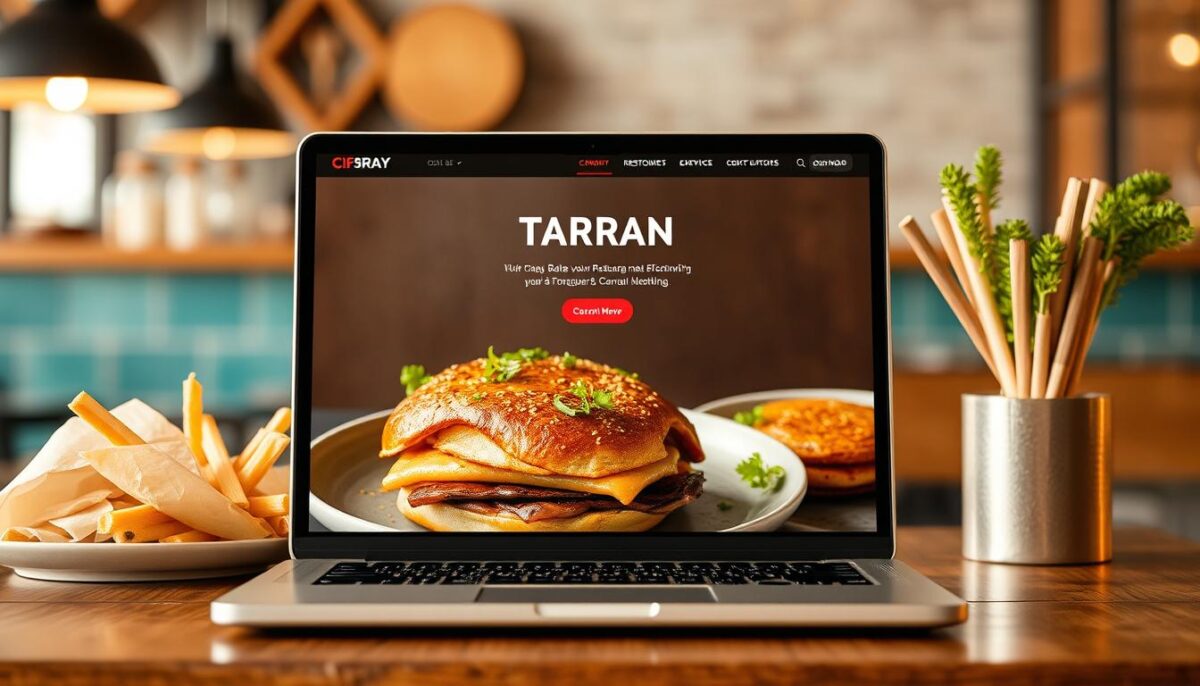
A user-friendly website is the cornerstone of your restaurant’s digital presence. It should provide a seamless experience, making it easy for customers to navigate, find information, and ultimately book a table or order online. When designing your website, focus on intuitive navigation, high-quality visuals, and clear calls-to-action.
To create an engaging website, consider the layout, content, and functionality. Ensure your menu is easily accessible and visually appealing, with images that showcase your dishes. Moreover, integrating online ordering and reservation systems can streamline the customer experience, driving sales and improving customer satisfaction.
Mobile Optimization Strategies for 2026
With 89% of people conducting dining research on their smartphones, mobile optimization is no longer a luxury but a necessity. A mobile-optimized website ensures that your restaurant’s online presence is accessible and user-friendly across various devices.
Key mobile optimization strategies include implementing responsive design, ensuring fast loading times, and incorporating touch-friendly navigation. Streamlining your mobile experience to prioritize information and actions most relevant to on-the-go customers is crucial. This includes optimizing your menu for mobile viewing, making it easy to read and navigate on smaller screens.
Additionally, integrating mobile payment options can enhance the customer experience, making transactions smoother and more convenient. Regularly testing your mobile site’s performance and making necessary adjustments will improve user experience and keep your restaurant competitive.
Mastering Google Business Profile for Restaurants
For restaurants, having a robust Google Business Profile is no longer a choice but a necessity in 2026. As the digital landscape continues to evolve, a well-optimized profile can significantly enhance your restaurant’s online visibility, driving more customers to your door.
Setting Up and Optimizing Your Profile
To maximize your restaurant’s Google Business Profile, start by ensuring your profile is complete and accurate. This includes verifying your business location, adding high-quality photos, and providing up-to-date hours of operation. Accuracy is key to building trust with potential customers and improving your local search rankings.
Claiming and verifying your Google Business Profile is the first step. Once verified, you can optimize your profile by adding relevant categories, a detailed business description, and high-quality images that showcase your restaurant’s ambiance and dishes.
Leveraging Reviews and Customer Feedback
Customer reviews have become a crucial factor in restaurant selection by 2026. Positive reviews can boost your Google ranking, while negative reviews provide valuable feedback. Encouraging satisfied customers to leave reviews is essential, but it’s equally important to respond thoughtfully to all feedback.
To effectively leverage reviews, focus on strategies that encourage positive feedback without violating Google’s policies. Responding promptly to both positive and negative reviews demonstrates your commitment to customer satisfaction and can enhance your restaurant’s reputation.
By analyzing review trends, you can identify areas for improvement and highlight your strengths in future marketing efforts. This not only improves your operations but also showcases your dedication to customers, making your restaurant more attractive to potential diners.
Social Media Marketing Strategies for Restaurants
With the rise of digital media, restaurants in 2026 are leveraging social media marketing to drive foot traffic and boost sales. As a restaurant owner, having a robust online presence is crucial for attracting and retaining customers.
To effectively utilize social media, it’s essential to understand the various platforms available and their unique features. In 2026, restaurants can benefit from platform-specific approaches to maximize their online reach.
Platform-Specific Approaches for 2026
Different social media platforms cater to different audiences and content styles. For instance, Instagram is ideal for visually showcasing dishes and behind-the-scenes moments, while Facebook is better suited for promotional offers and events.
By understanding the strengths of each platform, restaurants can tailor their content to suit their audience, thereby increasing engagement and attracting more customers.
Creating Engaging Content That Drives Foot Traffic
Creating content that resonates with your audience is key to driving foot traffic to your restaurant. This can be achieved by sharing behind-the-scenes glimpses, highlighting your chefs, and showcasing the creation of signature dishes.
High-quality food photography and videography play a crucial role in making your content appealing. Moreover, encouraging user-generated content through branded hashtags and interactive promotions can significantly boost engagement and attract new customers.
By leveraging trending topics and seasonal themes while staying true to your restaurant’s brand identity, you can create a marketing strategy that not only engages your online followers but also motivates them to visit your restaurant in person.
Ultimately, measuring the impact of your social media content on actual foot traffic and adjusting your strategy accordingly is vital for maximizing real-world results.
Email Marketing Campaigns That Convert
In the competitive landscape of the restaurant industry, a well-crafted email marketing strategy can be the difference between a bustling dining room and an empty one. As we explore the potential of email marketing, it’s clear that this channel offers a direct line to customers, allowing restaurants to promote their offerings, share news, and nurture loyalty.
Building and Segmenting Your Email List
Building an email list is foundational to any email marketing campaign. For restaurants, this involves collecting email addresses from customers, which can be done through online sign-ups, in-restaurant promotions, or events. It’s crucial to segment this list based on customer preferences, dining history, and other relevant factors to ensure targeted and effective campaigns.
Segmentation allows restaurants to tailor their messages, making them more relevant to the recipient. For example, customers who frequently order vegetarian dishes can be sent promotions related to new vegetarian menu items. This personalized approach enhances engagement and conversion rates.
Crafting Compelling Email Content
Crafting compelling email content is about more than just promoting your restaurant; it’s about creating a narrative that resonates with your audience. This includes using appealing visuals, clear messaging, and effective calls-to-action. Restaurants should experiment with different types of emails, such as promotional offers, event announcements, and loyalty rewards, to see what works best for their audience.
Tailoring emails for special occasions like birthdays or anniversaries adds a personal touch that enhances customer loyalty. Furthermore, targeted campaigns can successfully re-engage those who haven’t visited in a while, reminding them of what they’ve been missing.
Local SEO Tactics for Restaurant Success
In the competitive restaurant industry, local SEO tactics can make all the difference in attracting nearby diners. By optimizing your online presence for local search, you can increase your visibility and drive more foot traffic to your restaurant.
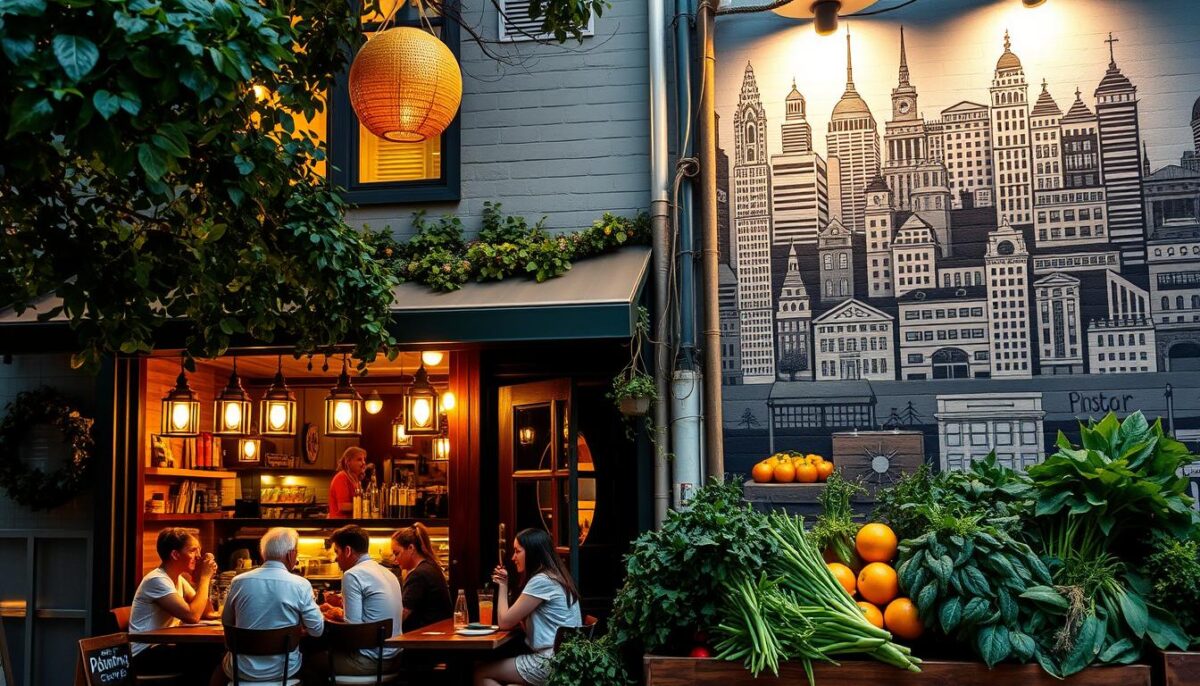
Optimizing for Local Search Terms
To optimize your restaurant’s website for local search terms, start by incorporating location-specific keywords into your content. This includes your city, state, or region in page titles, meta descriptions, and throughout your website copy. For example, if you’re a restaurant in New York City, you might use phrases like “NYC dining” or “best restaurants in Manhattan.” By doing so, you can dramatically increase your local SEO effectiveness, making it easier for nearby diners to discover your restaurant.
Another crucial step is to ensure your website is mobile-friendly and loads quickly, as many local searches occur on mobile devices. You should also create content that’s relevant to your local audience, such as blog posts about local events or seasonal menu items.
Building Local Citations and Backlinks
Local citations are online mentions of your restaurant’s name, address, and phone number (NAP) on other websites. These citations are crucial for local search rankings, as they help search engines verify your business’s existence and legitimacy. To build local citations, start by listing your restaurant on prominent directories like Google My Business, Yelp, and TripAdvisor.
In addition to citations, high-quality backlinks from local websites can significantly boost your restaurant’s online visibility. You can achieve this by partnering with local businesses, sponsoring community events, or getting featured in local food blogs and news sites. For instance, you could collaborate with a local food blogger to create a sponsored content piece that links back to your website.
By implementing these local SEO tactics, you can improve your restaurant’s online presence, attract more potential customers, and ultimately drive more sales.
Developing Customer Loyalty Programs
Customer loyalty programs are no longer a nicety, but a necessity for restaurants aiming to thrive in 2026. By incorporating a loyalty program into your marketing strategy, you not only reward your regulars but also turn occasional guests into loyal fans.
Benefits of Customer Loyalty Programs include enhancing customer retention, increasing customer lifetime value, gathering valuable data, and boosting customer satisfaction. A well-designed loyalty program can significantly impact your restaurant’s success.
Digital Loyalty Solutions for 2026
When it comes to implementing a loyalty program, leveraging digital solutions is key. Restaurant loyalty program software can help streamline the process, making it easier to manage rewards, track customer behavior, and personalize your marketing efforts.
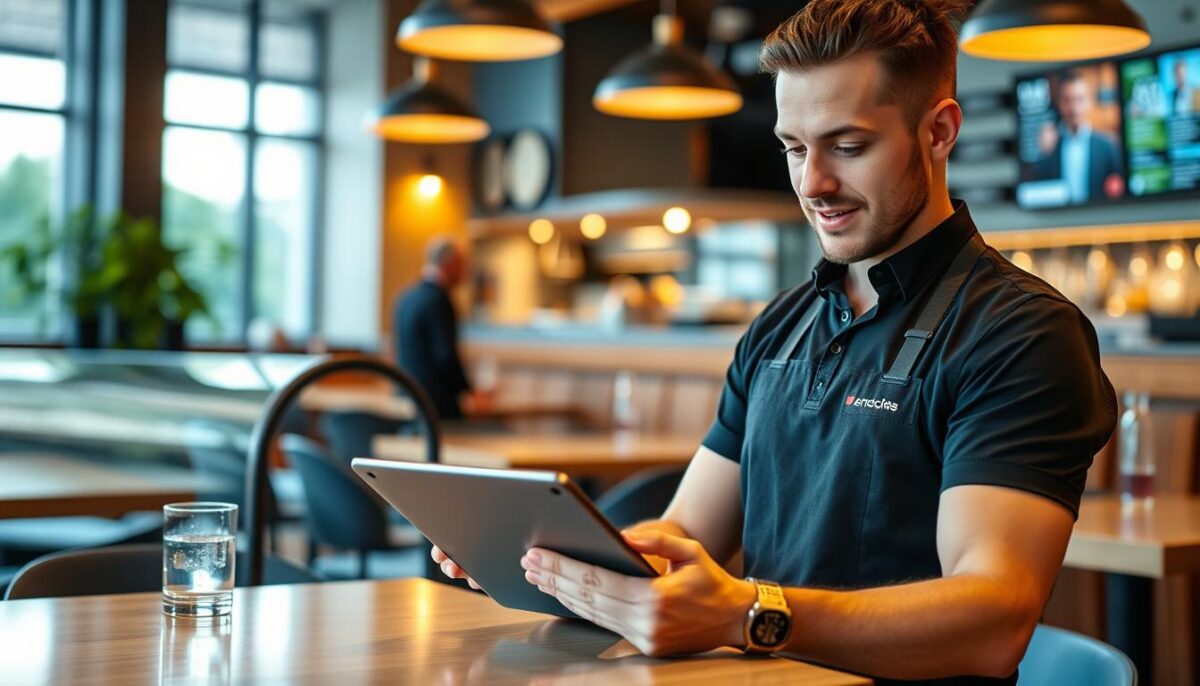
These digital tools allow you to create a seamless experience for your customers, from signing up to redeeming rewards. By going digital, you can also reduce administrative costs and gain valuable insights into customer behavior.
Incentives That Keep Customers Coming Back
The success of your loyalty program largely depends on the incentives you offer. It’s essential to understand the psychology behind effective loyalty incentives and why certain rewards motivate customers more than others.
Some effective incentives include experiential rewards, exclusive access, and personalized perks. For example, offering a free dessert on a customer’s birthday or a special discount for frequent visitors can go a long way in building customer loyalty.
To maximize the impact of your loyalty program, consider structuring your rewards to encourage specific customer behaviors, such as visiting during slow periods or trying new menu items. Determining the right reward values is also crucial – they should be generous enough to motivate customers without cutting too deeply into your margins.
Using special occasions like birthdays and anniversaries as opportunities to delight customers with personalized incentives can also enhance customer satisfaction. Creating limited-time promotions within your loyalty program can drive immediate action and keep your customers engaged.
Leveraging Influencer Marketing for Restaurants
In the ever-evolving restaurant marketing scene of 2026, influencer collaborations offer a fresh way to reach new customers. When you collaborate with influencers, you benefit from their credibility. Their followers trust their recommendations, making it an effective way to attract diners who may not have considered your restaurant.

Finding the Right Influencers for Your Brand
To successfully leverage influencer marketing, you need to find influencers who align with your restaurant’s brand and values. Look for influencers who have a genuine interest in your cuisine or dining experience. Their audience should match your target demographic. Micro-influencers, with smaller but highly engaged followings, can be particularly effective for local restaurants.
- Identify influencers who have a history of promoting dining experiences.
- Check their content quality and engagement rates.
- Assess their audience demographics to ensure alignment with your target market.
Creating Authentic Partnerships
Authenticity is crucial in influencer partnerships. To avoid collaborations that feel forced or insincere, give influencers the creative freedom to showcase your restaurant in their unique voice. Brief them on your brand identity and key messaging, but allow them to decide how to present it to their audience. Consider different collaboration models, such as one-time posts or long-term ambassador relationships, depending on your marketing goals.
Measuring the success of influencer partnerships is also vital. Use tracking links, custom codes, or unique hashtags to monitor the impact of their promotions. Repurposing influencer content across your own marketing channels can extend its value and enhance your overall brand visibility.
Hosting Events and Promotions That Generate Buzz
In the competitive restaurant landscape of 2026, hosting events and promotions is crucial for generating buzz and attracting new customers. By creating memorable experiences, restaurants can foster a loyal customer base and differentiate themselves from competitors.
Seasonal Marketing Opportunities
One effective way to drive engagement is by leveraging seasonal marketing opportunities. Restaurants can capitalize on holidays and seasonal trends to create themed events and promotions that resonate with their audience. For example, a summer BBQ event or a Halloween-themed dinner can attract new customers and encourage repeat visits. By aligning marketing efforts with seasonal trends, restaurants can stay relevant and top-of-mind for their target audience.
To maximize the impact, consider creating a calendar of events that highlights key seasonal opportunities. This can include partnering with local businesses to co-promote each other’s events, thereby expanding your reach within the community.
| Season | Potential Events | Marketing Opportunities |
|---|---|---|
| Summer | BBQ Nights, Outdoor Dining Events | Social media campaigns highlighting refreshing summer dishes |
| Fall | Harvest-themed dinners, Pumpkin festivals | Email marketing campaigns promoting seasonal menus |
| Winter | Holiday parties, Christmas markets | Influencer partnerships showcasing winter specials |
Community Engagement Strategies
Community engagement is vital for building a loyal customer base. Restaurants can achieve this by participating in or hosting their own community-focused events. This could range from fundraisers for local causes to neighborhood appreciation nights. By engaging with the community, restaurants can create a positive brand image and foster meaningful relationships with their customers.
To effectively engage with the community, consider partnering with local organizations and businesses. This not only expands your reach but also contributes to the local economy. For instance, hosting a charity event or sponsoring a local sports team can significantly enhance your restaurant’s reputation within the community.
Innovative Technology Integration
The future of restaurant marketing is here, and it’s all about embracing cutting-edge technology. As we move into 2026, restaurants are leveraging innovative solutions to enhance customer experience, streamline operations, and drive growth.
QR Codes and Contactless Solutions
One of the most significant advancements in restaurant technology is the adoption of QR code menu systems. By implementing QR codes, restaurants can provide customers with a seamless, contactless experience. Customers can simply scan the code with their smartphones to access the menu, place orders, and make payments.
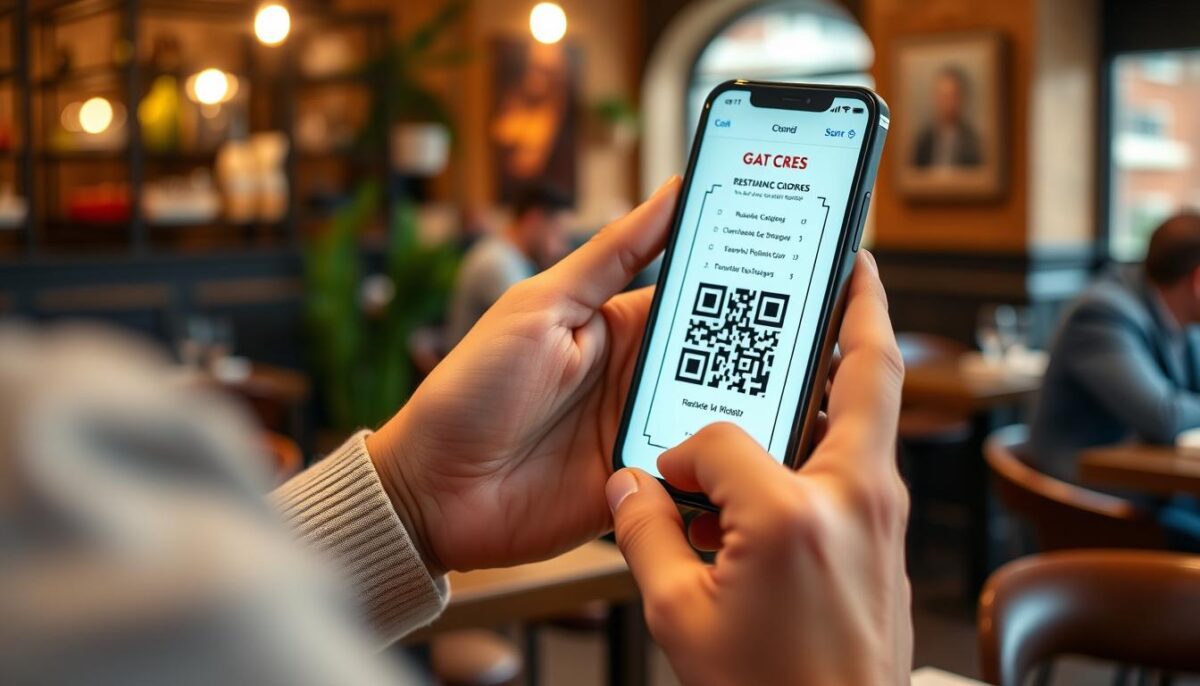
This technology not only enhances the dining experience but also reduces wait times and increases efficiency. Moreover, QR code menu systems can be easily updated, allowing restaurants to reflect changes in their menu or promotions in real-time.
Leveraging AI and Automation in Restaurant Marketing
AI and automation are transforming restaurant marketing by enabling personalization and efficiency. AI-powered chatbots can enhance customer service by providing instant responses to queries and helping with orders. Predictive analytics can help anticipate customer preferences, allowing for tailored marketing messages.
Automation tools can streamline marketing efforts, from email campaigns to social media posting. Personalized recommendation systems can suggest menu items based on customer preferences and past orders. By leveraging these technologies, restaurants can create a more engaging and personalized experience for their customers.
To balance technology integration with the human touch, restaurants should focus on using technology to enhance, rather than replace, human interaction. By doing so, they can create a seamless and enjoyable experience that drives customer loyalty and retention.
Measuring Your Marketing Success
As a restaurant owner, understanding the impact of your marketing efforts is vital to making informed decisions that drive customer engagement and sales. To achieve this, you need to track and analyze the right metrics.
Key Performance Indicators for Restaurant Marketing
To measure the success of your restaurant marketing, you need to focus on key performance indicators (KPIs) that provide insights into customer behavior, marketing effectiveness, and overall business performance. Some essential KPIs for restaurant marketing include customer retention rates, social media engagement metrics, website traffic, and conversion rates. By monitoring these KPIs, you can identify areas of improvement and adjust your marketing strategy accordingly.
Tools for Tracking and Analysis
Several tools can help you track and analyze your restaurant marketing performance. Google Analytics is a powerful tool that provides insights into your website traffic, user behavior, and conversion rates. Social media platforms like Facebook, Instagram, and Twitter also offer built-in analytics that help you measure engagement and reach. Additionally, CRM and email marketing platforms can provide valuable insights into customer behavior and campaign performance.
To get a comprehensive view of your marketing performance, you can create custom dashboards that bring together data from multiple sources. This allows you to track your marketing efforts’ effectiveness and make data-driven decisions to improve your strategy.
Adapting to Changing Consumer Behaviors
The key to success for restaurants in 2026 lies in understanding and adapting to the changing consumer landscape. As diners’ expectations continue to evolve, restaurants must be proactive in adjusting their marketing strategies to meet these new demands.
Understanding the 2026 Dining Customer
In 2026, the dining customer is more informed and discerning than ever. To effectively market to these customers, restaurants need to understand their values, preferences, and behaviors. This includes recognizing the importance of social responsibility and sustainability in their dining choices.
Diners are looking for restaurants that not only serve great food but also demonstrate a commitment to the community and the environment. By highlighting these aspects, restaurants can attract customers who share similar values.
Tailoring Your Marketing to New Expectations
To meet the new expectations of 2026 diners, restaurants must adapt their marketing messages and channels. This involves creating content that emphasizes the unique experiences offered by the restaurant, beyond just the food itself. Personalization is key; customers should feel recognized and valued through targeted marketing efforts.
By leveraging customer feedback and data, restaurants can continuously refine their marketing approach. This includes addressing health and dietary concerns proactively and balancing the promotion of convenience options like delivery and takeout with the unique in-restaurant experience.
Ultimately, the goal is to create a marketing strategy that resonates with the modern diner, driving loyalty and repeat business. By staying attuned to the evolving expectations of customers, restaurants can position themselves for success in the competitive 2026 dining landscape.
My Top Restaurant Marketing Strategies for 2026 Success
In the ever-evolving restaurant landscape of 2026, marketing plays a vital role in attracting and retaining customers. To stay ahead of the competition, it’s essential to implement effective marketing strategies that drive results.
Quick-Win Tactics for Immediate Results
To get started, focus on quick-win tactics that can deliver immediate results. Keep your Google Business profile up-to-date by ensuring accurate hours, menus, and contact details for better visibility. Add online reservation links to all platforms to make it easy for customers to book tables directly. Consider implementing a loyalty program to reward regular customers with discounts or points for repeat visits.
- Optimize your online presence for local search
- Utilize social media to engage with your audience
- Leverage email marketing to promote your restaurant
Long-Term Strategies for Sustainable Growth
While quick-win tactics are essential, it’s equally important to develop long-term strategies for sustainable growth. Building a comprehensive marketing strategy that supports your restaurant’s growth beyond immediate results is crucial. This includes developing a strong brand identity, creating a content marketing plan, and investing in search engine optimization.
- Develop a customer data strategy to personalize marketing
- Build strategic partnerships with complementary businesses
- Focus on community engagement and social responsibility
By combining quick-win tactics with long-term strategies, you can create a robust marketing plan that drives success for your restaurant in 2026.
Conclusion
With the 2026 season upon us, restaurants must refine their marketing strategies to stay ahead. Throughout this guide, we’ve explored various techniques to enhance your restaurant’s visibility and attract more diners. From optimizing your digital presence to leveraging influencer marketing and creating engaging content, these strategies are crucial for success in the competitive restaurant industry.
To thrive in 2026, it’s essential to adapt to changing consumer behaviors and technological advancements. This includes responding to guest feedback, unlocking guest data for personalization, and sharing behind-the-scenes content to create a personal connection with your customers. By implementing these tactics, you can create a cohesive marketing strategy that works seamlessly across platforms and touchpoints.
As you begin to implement these strategies, start with the ones most relevant to your specific situation and work toward a comprehensive marketing approach. Remember to measure your results and continuously refine your marketing efforts based on data and customer feedback. This will enable you to stay competitive and achieve sustainable growth.
Looking beyond 2026, the future of restaurant marketing is exciting and full of possibilities. By staying informed about emerging trends and being willing to adapt, you can position your restaurant for long-term success. I encourage you to take the first step today and transform your marketing approach for greater success in the years to come.
FAQ
How do I optimize my Google Business Profile for my eatery?
To optimize your Google Business Profile, ensure your profile is complete, accurate, and up-to-date, including high-quality photos, business hours, and a detailed description of your offerings. Respond promptly to customer reviews, and use the posts feature to share updates and promotions.
What are the most effective social media platforms for promoting my food business?
The most effective social media platforms for promoting your food business depend on your target audience. Instagram and Facebook are popular choices, as they allow you to share high-quality food images and engage with customers. Consider using Twitter for real-time updates and promotions.
How can I improve my website’s user experience and conversion rates?
To improve your website’s user experience and conversion rates, ensure it is mobile-friendly, has a clear and simple navigation menu, and loads quickly. Use high-quality images and make sure your menu is easily accessible. Implement online ordering and reservation systems to streamline the customer experience.
What are some effective email marketing strategies for my dining establishment?
Effective email marketing strategies for your dining establishment include building a segmented email list, crafting compelling subject lines, and creating engaging content that drives foot traffic. Offer exclusive promotions and loyalty rewards to subscribers to encourage repeat business.
How can I measure the success of my online marketing efforts?
To measure the success of your online marketing efforts, track key performance indicators such as website traffic, social media engagement, email open rates, and conversion rates. Use analytics tools to monitor your progress and adjust your strategies accordingly.
What role does local SEO play in my food business’s online visibility?
Local SEO plays a crucial role in your food business’s online visibility, as it helps your establishment appear in search results for location-based queries. Optimize your website and online listings for local search terms, and build high-quality local citations to improve your visibility.
How can I leverage customer loyalty programs to drive repeat business?
To leverage customer loyalty programs, implement a digital loyalty solution that rewards customers for repeat purchases. Offer exclusive promotions and incentives to loyalty program members to encourage retention and drive word-of-mouth marketing.
What are some innovative technology integrations I can use to enhance my customers’ experience?
Innovative technology integrations that can enhance your customers’ experience include QR code-based menus, contactless payment solutions, and AI-powered chatbots. Consider implementing online ordering and delivery integrations to streamline the customer experience.


